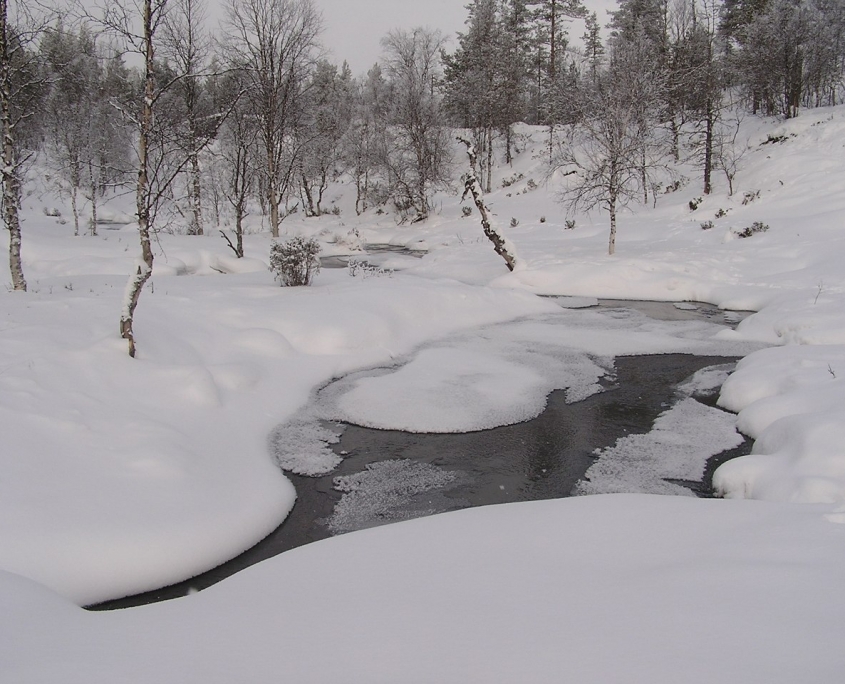The Running Stream at -23 Degrees Centigrade
The landscape is full of snow above the Arctic Circle in February and very cold. During my three weeks instructing on Porsche Ice Force the temperature moved to and fro from -4°C to -23°C with blue skies and with some of the most beautiful sunsets that I have witnessed, even rivalling some of those awe-inspiring desert displays of nature’s brilliance.
During my time here I had a few days to wander in this white landscape of forests and low hills around the small tourist town of Saariselkä, which had radiating out from it to all points of the compass ski and snow shoe trails. I walked (Illegally as I found out later) along one such ski trail that snaked up into the mountains (an optimistic term as here the mountains are only as high as the Cotswolds in England).
Snow crunched under my feet as I climbed a small hill that led into a valley, which in the summer would have had one of those beautiful babbling streams meandering along its wooded bottom. To my surprise I found that the water was still meandering along the valley with snow banks arching out above its course, with every so often a bridge of snow reaching across the width of the stream. I had imagined that everything would be frozen solid here during the winter and to see flowing water was magical indeed. I suppose that the snow which has life giving insulation properties just keeps enough of the cold off the running water to allow it to flow, hardly hindering its journey to the rivers and then to the sea. I made some enquiries and discovered that it is only at -35°C that the streams freeze, but even then deeper courses and rivers continue their inexorable journey to the sea under the ice.



